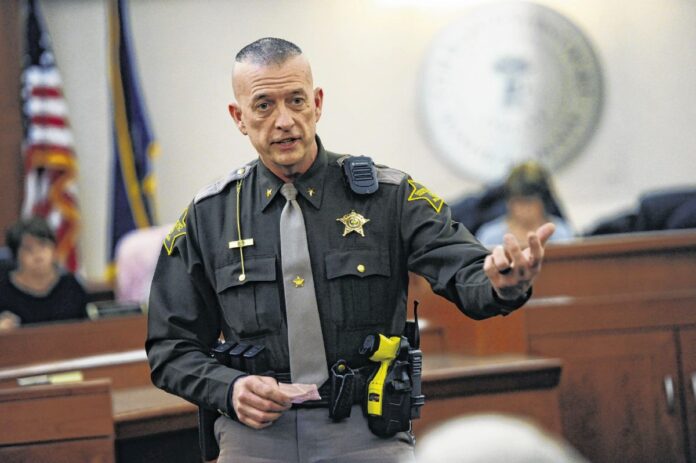
GREENFIELD — The Hancock County sheriff says he hopes planting a garden full of plants and vegetables next to the new county jail can help inmates who are on the road to recovery.
Rehabilitation is a top priority for the facility, set to open in 2021. More people who have mental illnesses and drug addictions are being incarcerated than ever before, so county jails have to create recovery programming. Sheriff Brad Burkhart said there are “endless opportunities” to help those serving time.
At recent meetings of the county commissioners and the county council, Burkhart presented his idea of creating a garden on a three-acre plot of land to the west of the site of the new county jail. The building, which will cost about $38 million, will have 440 beds and is being built in the 4400 block of East U.S. 40.
Burkhart, who has a background in farming, said he wants the garden to add to the jail’s recovery offerings. Some of the dormitory-style housing in the jail will be designated as recovery blocks, where inmates who want to battle addiction can be with “like-minded” people. Certified addictions specialists from the Hancock County Probation Department come to the current jail three times a week to conduct the county’s jail intervention program, and Burkhart has also reached out to mental health physicians at Hancock Health.
Using “farm” as an acronym — Forging A Rehabilitative Mindset — Burkhart said some of the low-level offenders who want to tend to the garden will be able to do so outside in an area surrounded with correctional-grade fencing. Burkhart is imaging two acres for a garden and the third acre for greenhouses so they can look after plants in the winter months. There, inmates can learn a skill they can use for the rest of their lives.
“It is rehabilitative to get them out there and learn something they’ve probably never done in their life,” he said, adding it’s another way to try and keep people from re-offending and coming back to jail.
Burkhart said he would also try and partner with local gardening groups who would be interested in helping.
The vegetables grown in the garden could be used in inmate meals or maybe sold at the farmer’s market, Burkhart said, adding there are a lot of different possibilities on how to best use, and also grow, the program.
John Jessup, president of the county commissioners, said he’s in favor of adding a garden at the jail, saying it won’t be costly and will aid in the focus on recovery at the jail.
“It’s something inmates can be proud of and look forward to,” Jessup said.
The price for fencing and other garden supplies would be covered in the jail’s overall budget, Jessup said.
Corrections in Indiana has a significant history with agriculture. The Indiana State Farm — now the Putnamville Correctional Facility — included a working farm using prison labor for nearly 70 years after it opened in 1915, according to the Indiana Department of Correction.
Burkhart is also considering renovating the current jail’s indoor recreation area into a recovery block big enough to house 20 men or women. He’s been in talks with the new jail’s engineers and architects to estimate how much the upgrade could cost and how long it would take to complete. Those findings will determine whether the county proceeds with that project, Burkhart said.
If the county brings back 20 inmates it currently pays to house in other counties, Burkhart said it may be able to receive more than $200,000 over the course of a year to use on the rehab block. The state pays counties a daily rate to house Level 6 felons, which the DOC bases on a formula.




